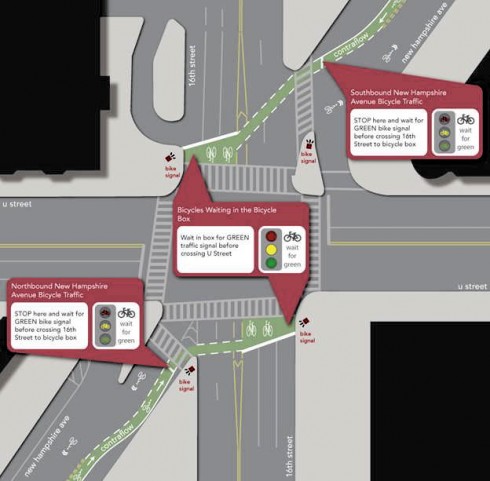A chance meeting can lead to unexpected discoveries.
I met and spoke with Kurt Cibulski following a reading from a new book by its author, a mutual friend. I had arrived at the reading by bicycle; Kurt and I were talking bicycling. Kurt explained that he has a seizure disorder. The bright, rapidly-flashing LED headlights that bicyclists are increasingly using can initiate a seizure for him. “Who’d ‘a’ thunk it.” thought I.
Who? A proper, national standards-setting body, because someone, somewhere, would have brought the issue to its attention. On second thought, it’s obvious. Flashing lights are well-known to trigger seizures.
It’s also a truism that flashing lights draw attention. Many bicyclists ride in urban areas with overhead lighting, and don’t need a steady headlight beam to guide their way. But on the other hand…there’s the seizure problem.
Without careful standards setting, issues like this slip through the cracks. Designs get based on whim, commercial appeal, economies of production and avoidance of liability risk.
In the USA, individual cyclists are held responsible under state laws for using lights at night, but law enforcement is near-nonexistent, and many cyclists don’t use lights. The USA does have a Consumer Product Safety Commission, which, under pressure from the bicycle industry, has set standards — weak standards — only for retroreflectors on bicycles, never for lights. Retroreflectors only work for drivers whose headlights are pointed at them, and do not light up for the pedestrian stepping off the curb, the motorist in the cross street ahead, two bicyclists on a path approaching each other head-on. Bicycle manufacturers can point to Federal regulations and say that they are doing something for nighttime safety, while not being held responsible for these deficiencies.
This situation holds some ironies and unintended consequences beyond the obvious one that cyclists are being injured and killed for want of lights. The lack of standardization in the USA has given lighting manufacturers free rein to innovate, and has led to the availability of some very fine bicycle lighting systems. In the USA, when you see a cyclist with a light, you will probably see that cyclist from a good, long distance, because the light is a very good light.
In Germany, by way of contrast, lights are required on new bicycles. Manufacturer pressure comes to bear in a different way. To keep expense down, most lights only meet the letter of the law and are are less bright, and much less reliable, than the good ones sold in the USA. Bureaucratic inertia has compounded the problem: Germany requires bicycle lights to be powered by a generator. That made sense 40 years ago when battery lights were weak and battery replacement was expensive. Today’s efficient light-emitting diodes and high-capacity rechargeable batteries make battery lights economical and practical.
Generator lights also have improved, thanks to advances in technology and to discerning European cyclists’ demand for better lights that also meet the requirements of their laws — but a good generator lighting system can cost half as much as the bicycle on which it is installed.
A restrictive legal climate leads to this kind of market distortion; contrast this with the wider scope of innovation and slip-through-the-cracks issues in the US market.
I can’t help noticing that kiosk “bike share” (actually rental) bicycles that are becoming popular in American cities all are equipped with LED headlights and taillights, powered by a generator in the front hub. It only makes sense. The rental agencies have a more direct liability exposure than bicycle manufacturers who sell to individuals. But — the lights on the rental bicycles flash, because the generators produce alternating current and the output is not smoothed. Possibly also because flashing lights are popular and nobody though of the seizure-disorder issue.
Where are we heading with all this? I think that we’re approaching a political tipping point where regulations requiring lights on at least some kinds of new bicycles might be possible in the USA: both because of an increase in interest in utility cycling, and because improving technology had made bicycle lights much less expensive, more reliable and more compact. I mean, if little children can have flashing LEDs in the soles of their shoes, just to look cool, it isn’t much of a leap to think that every new utility bicycle could be equipped with lights.
But we also need to be smart, and look forward as technology improves, so regulations don’t box us in with outdated technology and inferior products, as in Germany.
Now, about those onions:
To give Kurt proper credit in this article, I asked his name and came up with another unexpected discovery. He spelled his name, and then volunteered, “Cibulski means ‘onion man’ in Polish. It’s a pan-European word.” Yes! Again, who’d ‘a’ thunk it? German, Zwiebel. Spanish, cibolla. I looked it up, and found variants in languages as diverse as Basque, Czech, Gaelic, Norwegian, Romanian…
I suppose that there’s another parallel, besides the two unexpected discoveries. Bicycle lighting issues, with all the political and technological complications, peel apart in layers like an onion, too.
Thanks, Kurt!



